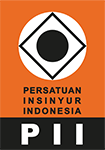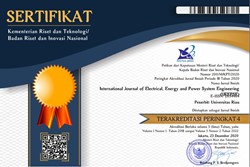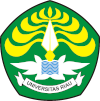Redesign of Artificial Lighting with Electricity Saving Aspects
Abstract
Redesign of artificial lighting with electricity saving aspects at the Putri Tujuh Ujung Batu Foundation aims to evaluate the design of artificial lighting systems in several rooms including the Inayah Islamic Elementary School Office, Putri Tujuh Orphanage Dormitory and Fastabiqul Khairat Mosque by calculating aspects of energy savings. Initial measurement results show that the lighting strength in each room does not meet the specified standards. The measurement results are evaluated using the zonal cavity method. It is recommended that the type of lamps used are 2 Philips LED 27 Watt lamps and 33 Philips LED 33 Watt lamps. Calculations with this method are simulated using the DiaLux Evo V.8.2 software which displays a three-dimensional image along with the strength of the lighting in each room. From the simulation results it was found that the use of pure white paint coated walls increases the lighting strength. The percentage of Electricity savings for Inayah Islamic Elementary School office space was 31.25%, Putri Tujuh Orphanage Dormitory was 61.64% and the Fastabiqul Khairat Mosque was 7.11% when compared to the use of Hannochs lamps.
References
[1] Atmam & Zulfahri, "Intensity analysis of information and electricity use in computer laboratory State Elementary School 150 Pekanbaru", Lancang Kuning University, 2015.
[2] Standardization 2011 SNI 6197-2004, "Measurement on workplace illumination", 2004.
[3] General Uniform Lighting Philips, Retrieved 29 July 2019.
[4] Havif, Ikhbal JH, "Quality evaluation of the lighting at the lecture hall building C Faculty of Engineering University of Riau", 2017.
[5] Irianto, C. G, "Optimization study of lecture room lighting system by utilizing natural light", Journal Volume 5 Number February 2, 2006 ISSN 1412-0372, Jakarta, Department of Electro-FTI Engineering Trisakti University, 2006.
[6] KEPMENKES RI, Nomor 1405 Tahun 2002, "Environmental health requirements of office and industrial work", Retrieved 8 December 2018.
[7] Satwiko, Prasasto, "Building physics", Yogyakarta, 2008.
[8] Suhardi, B, "Industrial work and Ergonomics System Design", Vol. 2 Directorate of VOCATIONAL Development, Jakarta, 2008.
[9] Wibiyanti, P.I, "Lighting study on small industry apparel and bag making in small industrial village milling", Thesis, Jakarta, 2008.
[10] Wisnu, Indarwanto, M, "Evaluation of natural and artificial lighting system in the working space of Paninggilan Utara village", Ciledug, Tangerang, 2017.



















